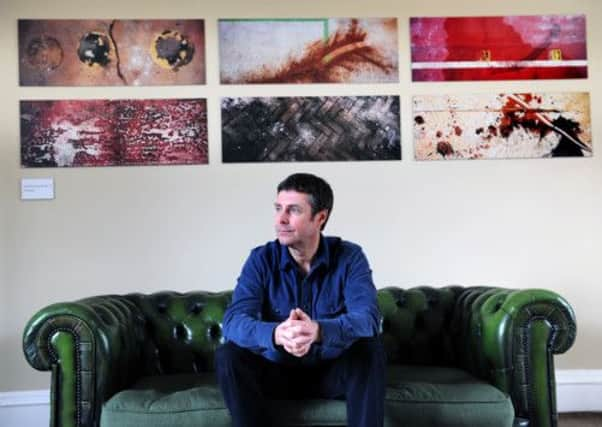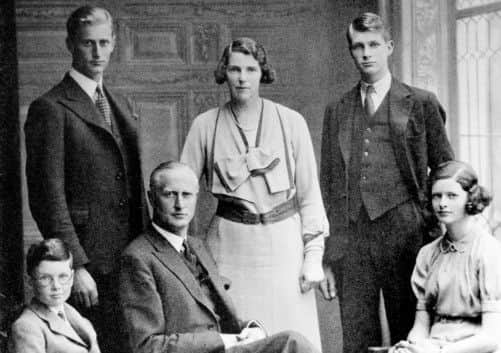The end of the sweet life


When most people walk past the redundant Terry’s chocolate factory in York they see a symbol of British industry in decline; its distinctive clock tower and grand entrance buildings standing as testament to a very different age.
Peter Heaton sees all that, but a few years ago he also saw a photographic opportunity. It was back in 2005 that the last Chocolate Oranges rolled off the production line and the factory gates on Bishopthorpe Road were locked for the last time. Like many of the country’s manufacturing businesses, production had been shifted overseas and the site, just a couple of miles from the city centre and a stone’s throw from both York Racecourse and the main transport routes north and south, looked ripe for development. Peter realised that if he were to capture for posterity the remnants of Terry’s, a firm which had once been one of the city’s biggest employers, he would have to act quickly. Having secured access to the factory buildings, the photographer began documenting the cavernous production rooms where consignments of Terry’s All Gold had once been signed off and the offices within which each new addition to the confectionery range had been agonised over.
Advertisement
Hide AdAdvertisement
Hide Ad“I’d already photographed British Sugar, which had closed its site in York in 2007 and turning my lens onto the Terry’s factory seemed like a natural progression,” says Peter, who for many years taught photography at York College. “I’ve always been interested in the space which is left behind when people move out. Terry’s was such an important part of this city, thousands of people had walked through those gates over the decades and then all of a sudden it became a ghost town.


“It was a little eerie standing in these vast spaces with no one else there, but it’s also fascinating. Stripped back you are confronted by the essence of the place. By the time I got onto the site most of the machinery had been sold off and the nuts and bolts of the factory had been stripped out. It was almost as though you were seeing its skeleton.”
Peter’s collection of photographs has just gone on display in a new exhibition at Goddards House. Once the family home of Noel Terry, the property is now run by the National Trust, which has transformed the former games room into an exhibition space.
The house is a short walk from the factory and Peter’s collection is a reminder of the centuries of hard work which went into making the family’s not inconsiderable fortune.
Advertisement
Hide AdAdvertisement
Hide AdFrom the murals which were painted to brighten up otherwise drab workspaces to the corridors lined with formal black and white portraits of those who reached their 50 years service with the company, the images capture a significant chapter in the social and industrial life of the city. It was one where all management were referred to as Mr, where factory workers manually clocked in and out and where philanthropy went hand in hand with commercial success.
“There’s always one image in any collection like this which stands out and here it’s the footprints made in the spilled cocoa powder,” says Peter. “I guess it captures the human side of Terry’s, the last marks made by the workforce. However, I’m just as interested in the architecture of the buildings. In many of the factory spaces there were no windows and therefore no natural light, so in an attempt to brighten the place up they painted a series of murals.
“Devoid of people you get a real sense of how big the space was and why its closure left such an impression on the city.”
While Peter, along with pretty much everyone else in York, expected that the Terry’s site would be now enjoying a new lease of life, it hasn’t turned out that way. Plans for a housing development with hotels, shops, a bar and restaurant were approved and last year the demolition of various factory buildings began. However, the work unexpectedly stalled and once again a For Sale sign went up.
Advertisement
Hide AdAdvertisement
Hide Ad“Once buildings become vacant they very quickly start to deteriorate,” says Peter, who also runs Vale of York Dark Rooms, where he teaches traditional methods of film development and hires out facilities to other keen photographers. “Not long after I’d been inside Terry’s it became the target of vandals. While most of the really valuable equipment had already been sold on, there was still a lot of metal in the place. There was one room which had banks of sinks in it and I don’t think it was too long before someone came along with a hacksaw and removed the metal taps.
“I’m so glad I was able to go in when I did, because even if I had left it a few more months nature starts to take over. There was still a sense of the old factory when I did this collection, a sense of what it had been.”
Goddards House is a relatively new addition to the National Trust’s portfolio and having opened to the public last year, this spring the organisation is keen to expand its offering to visitors.
“If you’d seen this space a few months ago you wouldn’t have believed that it could be an exhibition space,” says Clare Fletcher, visitor and volunteering manager. “When we first showed it to Peter it was full of cardboard boxes and it really had seen better days. Thankfully he could see beyond the debris and having his photographs of Terry’s for the very first exhibition in what was once the home of its managing director seems like a perfect fit.”
Footprints in the Cocoa Powder, until May 6 at Goddards House, Tadcaster Road, York. The property is open Wednesday to Sunday, 11am to 5pm. 01904 702021, www.nationaltrust.org.uk/goddards/